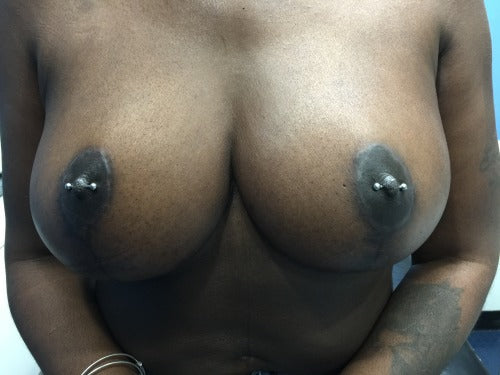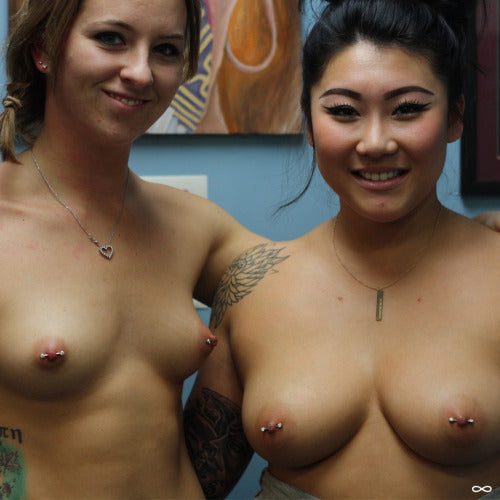
Goodbye, Tumblr
Last week, Tumblr announced that on Monday, December 17 the social media platform will no longer allow adult content. This is content described in the site’s updated community guidelines that “primarily includes photos, videos, or GIFs that show real-life human genitals or female-presenting nipples, and any content—including photos, videos, GIFs and illustrations—that depicts sex acts.” With this decision, Infinite Body Piercing, along with numerous artists, photographers, sex educators, body modification enthusiasts, and untold numbers of disappointed users are making the decision to leave the platform, saying “Goodbye, Tumblr.”
Why is Tumblr’s decision such a big deal? Aren’t there plenty of other places to get adult content online? Yes, there are, but that’s missing a larger point.
[Images that follow are NSFW.]

The mainstream popularity of body piercing in the late ‘90s roughly coincided with the rise of the Internet. It was a time of the beginning of unprecedented social connectivity, when many who thought they were isolated in their interests first found others like themselves. It was when many marginalized sexual minorities found community for the first time online, especially younger gay men, lesbians, bi-sexuals, and all manner of queer people questioning their sexuality. Trans folks and gender-nonconformists, especially those isolated from more populated areas, more easily found each other too, and were able to share their experiences—experiences that many thought they were the only ones who had. All manor of people were able to band together online and share about their formerly isolated interests—and this included body piercing and modification enthusiasts.
It’s hard to think of body piercing fans as a marginalized group now, but until piercing (and even tattooing) was accepted by the mainstream it was still often considered “self harm” by mental health professionals, and—like homosexuality was in the past—symptomatic of larger mental issues. It’s therefore not surprising that many practitioners were understandably cautious about being “out” to those around them, and they found solace online.

Originally, smaller, more specialized body-art communities like rec.arts.bodyart and IAM.BMEzine were the go-to destinations for the online body modification community, and these were eventually replaced in popularity by MySpace and Facebook’s bigger, more inclusive platforms—but in a sanitized, safe-for-work version. When Tumblr started in 2007, it seemed like a throwback to the early days of the Internet, as a place where “adult” content was not separated from the rest, but simply a part of it all. It was a place for not only explicit photos and GIFs, but but for education on sex-related topics as well, and as such became a network for diverse creative communities, often organized around a similar sexual identity—or kink. This included body piercing, and all the (uncensored) sexuality that comes with it. It wasn’t just that Tumblr hosted adult content; it was that it normalized it.

While not always at the forefront, sexuality has always been an integral part of modern body piercing. While body piercing today is often thought of as intricate ear projects on carefully curated Pinterest boards, the reality is quite different. In last year’s statistics article, we posted the breakdown of the piercing services we performed at Infinite in 2017: while approximately 75% of our services were for piercings above the neck, the remaining 25% were for other piercings. With the exception of a small amount of navel piercings (around 1%), almost one fourth of the piercings we perform can’t be shown on most social media sites, like Facebook or Instagram. This includes piercings on “female-presenting” nipples and an extensive array of both vulva and penis piercings. While Twitter does still allow NSFW content, Tumblr—as a more image-based platform—was the natural home for us. It was a place to see what piercings, tattoos, and other work was being done not just around you, but around the world.

Body modification enthusiasts who follow NSFW blogs on Tumblr aren’t the only ones lamenting the sites (anticipated) demise. Much has been written about how Tumblr’s ban will harm sex-positive communities, and sex workers especially. As Marianne Eloise writes in her article “Without NSFW Content There Is No Tumblr”:
The community that will be most hurt by the site’s rules are sex workers, who are increasingly being pushed out of platforms like PayPal and Instagram. As a teenager, I followed sex workers who posted about their lives and was taught about a stigmatized industry that nobody IRL was discussing.
But Tumblr wasn’t just about promoting your livelihood. John Paul Brammer wrote in the Washington Post, “RIP Tumblr porn. You made me who I am”:
Ultimately, what I appreciated about Tumblr when I first started using it was that it introduced me to a new kind of person — one who read books, watched porn, liked memes, was a feminist and was super, super gay, all at once. This was a person for whom sex wasn’t bad or scary. It was just part of your personality, another interior terrain of likes and dislikes.
It wasn’t just about finding yourself, but finding others like you. “Tumblr made sex a community experience,” writes model and filmmaker Vex Ashley.
Sex wasn’t this separate, shameful thing, it was allowed it to exist right next to every other facet of our messy, millennial experience. We shared it, discussed it, debated it and curated it. Porn on Tumblr wasn’t treated as disposable, something just to be immediately purged from your browser history, but an aesthetic, artistic component of your page and your life, alongside your complementary colours of sunsets and song lyrics and personal posts. It was out in the open. It allowed you to become a collector of your own desires, displaying them and celebrating them proudly, rather than having them spoon fed by a tube site algorithm.

Tumblr did have it’s downside, often being mocked for enabling a population of “social justice warriors.” But that was really a small part of it. From The Ringer’s Roundtable: What Happened to Tumblr?
It's mocked for it now, but Tumblr also taught me a lot of the basics of social justice discourse, mostly by just reading the perspectives of people whose backgrounds were different from my own. If Twitter is an ideological silo, Tumblr was a horizon opener.

Unfortunately, the recent announcement about the new adult content ban was the last of many actions that threatened this free exchange of (NSFW) images and ideas on Tumblr, and many see it as not just the death of the site, but the middle of the end of the old Internet. It’s the end of something special for a lot of us, and not just those of us in the body modification industry. Come Monday, we’re going to be joining the exodus from the platform. It’s with deep regret that we report we will be shutting down the Infinite Tumblr and like many thousands (millions?) of others, we will be looking for an alternate platform for our NSFW content. Maybe it’s finally time to really step up our game on Ello….
I think the saddest part for me is Tumblr was the only place that all my work could be displayed side by side. pic.twitter.com/UsGg26FTRe
— Corwin Prescott (@CorwinPrescott) December 3, 2018

Leave a comment